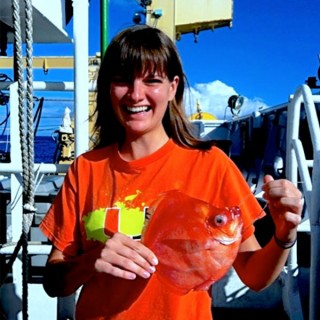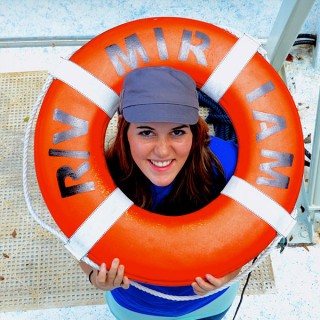We’ve completed the first full day of operations. The most exciting part of the day was shooting off an XBT, an expendable bathythermograph. This is a probe that drops to the bottom of the ocean while connected to the ship by a thin copper wire. It sends temperature and depth data to the control room, and we use that information to determine how fast sound will travel through the water. This is critical when we are running the acoustics systems and the DIDSON. If we couldn’t incorporate this sound speed, the data from these instruments would not be accurate.
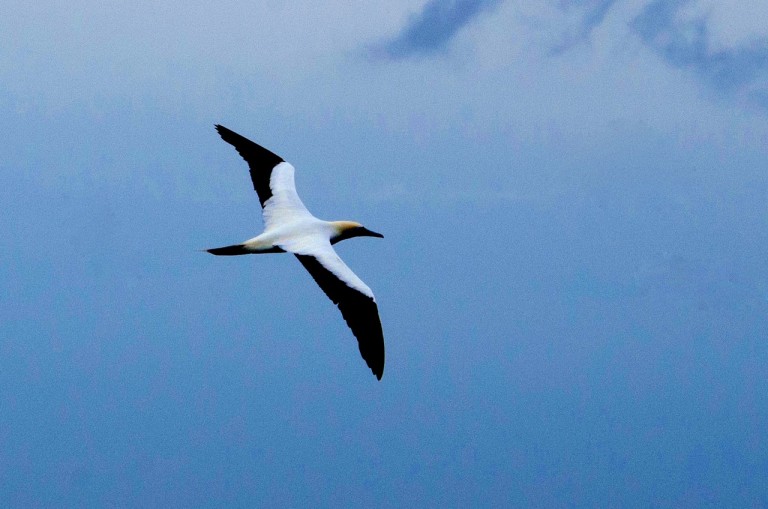
It was a great time learning the “technique” to properly fire an XBT from the back of the ship while moving, and we were able to shoot a second one off during the night transit. These provide a very fast method of collecting valuable data without the ship having to stop other operations. The lesson was a great morale booster and bonding experience for our team!
After the XBT lesson, it was full steam ahead for data collection. To run a good cruise and complete valuable research, you have to have a good sampling design. We can’t drive willy-nilly around the ocean hoping to get something out of it. The sampling design we have chosen requires us to go back and forth in straight lines, getting both day and night samples across the same areas. The ship’s mates, the all important people standing on the bridge running the ship, will be amazing at driving straight lines after this trip is over. Maybe we should try to come up with more exciting patterns before they kick us off from boredom.
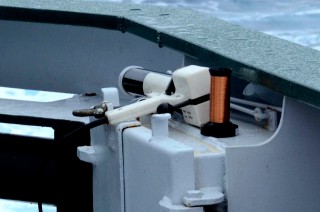
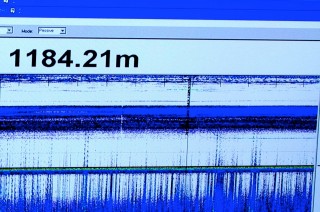
Night Moves
Sampling day and night is important as it allows for a comparison between the numbers of animals in the same place in two different lighting conditions. If you looked at our data, you would quickly find big changes between the day and the night. For us to understand the secret lives of whales, we need to understand where the animals they eat are at all times, even during the darkest hours.
Whales are able to forage during the night as well as the day because they use echolocation, or sounds like clicks, to locate prey. This enables the whales to locate organisms in dark deep waters. We use a hydrophone (like an underwater microphone) to record these clicks and determine that there are whales eating in the area. The species of interest for this cruise: sperm whales, beaked whales, and short-finned pilot whales, have distinct clicking patterns that help us determine the species when we can’t spot them from the surface. The Ecological Acoustic Recorder (EAR) on the DIDSON package, which we talked about yesterday will also record these clicks during the cruise.
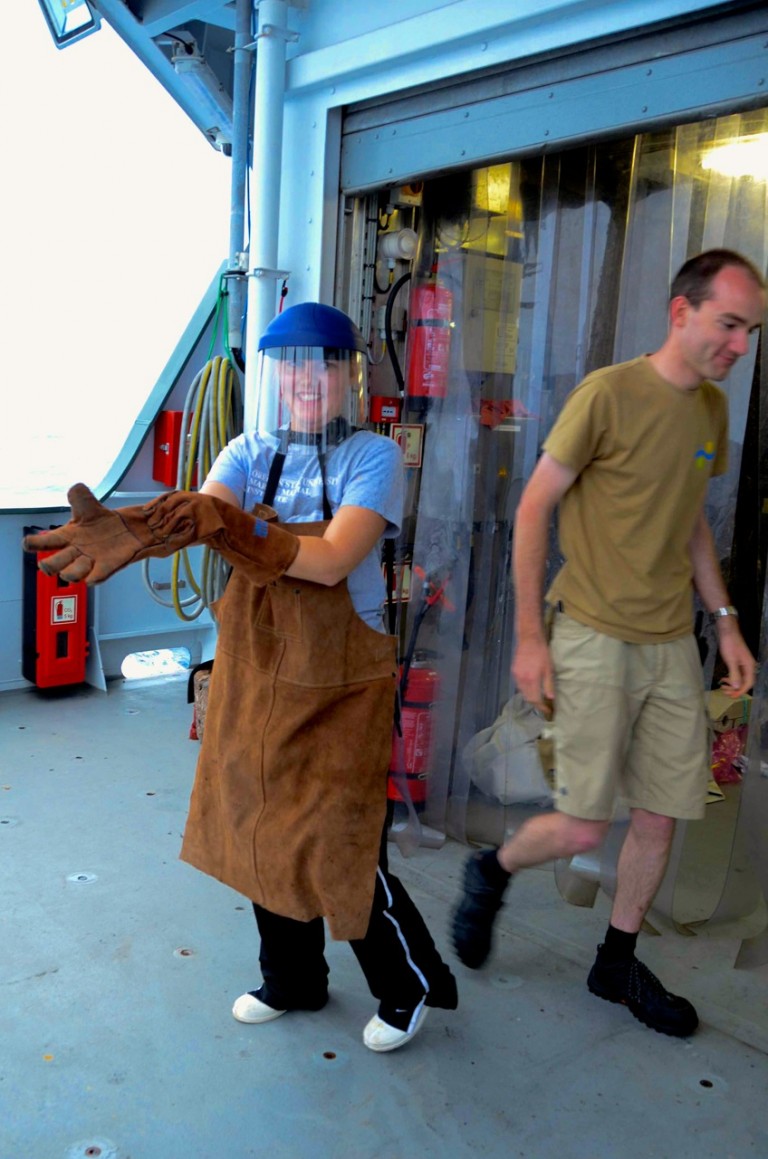
Using a hydrophone is what we call passive acoustics—listening to the sounds that are already there. But we’re also using active acoustics, which is where you send sounds into the water (learn more in the video below). When the sonar detects something, like a fish, it will bounce back at a different strength than empty water, and we can interpret these echoes. There are usually multiple layers of animals in the ocean—a surface layer and a deep layer. These layers can change greatly depending on the types and sizes of animals present, and these are some of the differences we want to discover. The most important factor we’re studying about the layers is the abundance, or amount, of organisms detected from the sonar. The daily migration and composition of these layers is key to understanding the food web off the Kona Coast of Hawaii, particularly with respect to marine mammals.
We have finished our first lines over the northwest corner of the Island of Hawaii. Stay tuned as we head south and closer to shore to scan the more productive waters along the coast.
